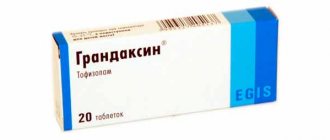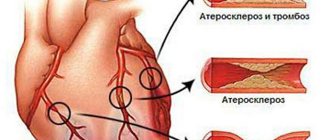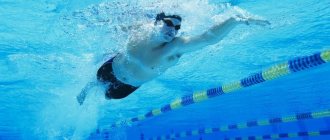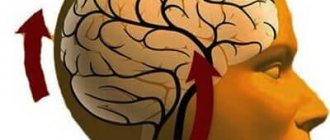VSD - treatment, do not rush to use drugs after the first symptoms appear. This symptom complex is very vague regarding the reasons for its occurrence. A large percentage of patients develop neurosis. In order to correctly build a treatment regimen for VSD, it is necessary to conduct a high-quality diagnosis.
Symptoms of VSD vary from person to person. But you shouldn’t fall into hysterics from the very beginning, thinking that there is a threat to life. Still, the human body is a fairly protected system. Exceptions to the rules are possible only in extreme cases.
Do not think that your body is the exception to the rule.
Treatment of VSD should always begin with a simple one - psychotherapy (we mean a large percentage of neurosis hidden behind these symptoms), switching to proper nutrition, at least for a certain period of time, sufficient rest, strengthening the immune system. This approach is not based on interfering with the body’s control system with pills.
The use of drugs for the treatment of VSD should begin only when the symptoms of VSD begin to actively interfere with a person’s ability to live in normal conditions. If you have already tried all the simple options and it didn’t help, then yes, you can. And then, from the very beginning, you should use simple drugs. You should not immediately load the body’s systems with heavy medications.
VSD - treatment, drugs
Treatment of VSD always begins with non-drug correction of symptoms. Medicines for vegetative-vascular dystonia are prescribed if non-drug treatment is ineffective.
For reference. It is important to take into account that if recommendations for lifestyle correction, normalization of physical activity, sleep and rest patterns are not followed, pills for vascular dystonia will also not give the desired effect.
The doctor must decide what to take for vegetative-vascular dystonia. The choice of drug depends on:
- type of vascular dystonia ( VSD of the hypotonic type , vegetative-vascular dystonia of the hypertensive type , mixed type of VSD);
- severity of VSD and frequency of development of vegetative-vascular crises;
- the prevailing symptoms of vegetative-vascular dystonia (thermoregulatory disorders, cardiac symptoms, gastrointestinal tract disorders, neurological or emotional disorders, blood pressure lability);
- patient's age;
- the patient has concomitant diseases or contraindications to the prescription of certain medications.
You should not choose your own medications for vegetative-vascular dystonia, since before starting treatment, the doctor must conduct a full examination and exclude the presence of other diseases that can give symptoms similar to VSD (arterial hypertension, thyroid diseases, neuroses).
Use of sleeping pills
One of the typical signs of vegetative-vascular dystonia is various sleep disturbances. To get rid of this problem, doctors recommend sleeping pills, which effectively relieve such problems.
If you have problems sleeping, use:
- Dormicum;
- Barboval;
- Zolpidem;
- Donormil.
These drugs can be combined with natural sleeping pills, but they can cause heart rhythm disturbances. Therefore, their use should be careful, in strict accordance with the doctor’s recommendations.
List of drugs for the treatment of vegetative-vascular dystonia
Tablets for vegetative-vascular dystonia are divided into etiotropic and symptomatic drugs.
Etiotropic therapy is prescribed to eliminate the provoking factor that contributes to the appearance of symptoms of vegetative-vascular dystonia (neurosis, hormonal disorders, inflammatory processes).
Symptomatic therapy can eliminate the manifestations of VSD and quickly improve the patient’s condition.
Drug groups
For the treatment of vegetative-vascular dystonia, the following groups of drugs are most often prescribed:
- Medicines that have a depressant effect on the nervous system:
- sedatives (prescribed for increased emotionality, neuroses, anxiety, mild and moderate sleep disorders);
- tranquilizers (prescribed rarely, for severe neuroses and frequent panic attacks);
- antidepressants (prescribed in isolated cases, for concomitant depressive disorders);
- sleeping pills (prescribed in short courses for severe sleep disorders);
- sleep tablets (they are not sleeping pills, they facilitate the process of falling asleep and improve the quality of sleep).
- Drugs that have a stimulating effect on brain activity and metabolic processes in tissues:
- metabolic agents (improves oxygen exchange in tissues, normalizes metabolic processes in the tissues of the brain and myocardium);
- adaptogens (have a general tonic effect on the body);
- antioxidants (improve metabolic processes in tissues, have a general strengthening effect, normalize vascular tone);
- nootropics (improves metabolic processes in brain tissue).
- Drugs to improve cerebral circulation and venotonics.
- Phytoestrogens (prescribed to women during menopause or to patients with a slight decrease in estrogen levels).
- Vitamins, amino acids and microelements.
Use of antidepressants
The use of antidepressants is necessary if there are such indications:
- Bad mood;
- anxiety;
- anxiety;
- fear and phobias.
The use of antidepressants is indicated only with a doctor's prescription, in the presence of dystonia in the acute stage. Only people who have reached the age of majority are allowed to drink such drugs.
Doctors' opinions on the need to use antidepressants vary. Some prove their high effectiveness in relieving a number of symptoms of VSD, others are of the opinion that there are a large number of side effects from drugs of this kind.
Doctors often prescribe the following medications:
- Pyrazidol;
- Azafen;
- Paroxetine;
- Amitriptyline;
- Prozac.
click to enlarge
Adequate intake of these drugs allows you to:
- get rid of symptoms of depression;
- improve mood;
- change a person’s psychological state;
- regulate the functioning of the central nervous system;
- eliminate panic attacks.
Features of prescribing drugs for VSD
The pathogenesis of the development of symptoms of vegetative-vascular dystonia is based on an imbalance between the work of the sympathetic and parasympathetic parts of the autonomic nervous system.
For reference. With VSD, there are no pronounced hormonal disorders, organic pathologies of the gastrointestinal tract (ulcer, gastritis), cardiovascular system (heart defects, myocarditis, endocarditis, severe forms of atherosclerosis), cerebral circulation disorders associated with atherosclerosis, thrombosis.
In this regard, treatment of VSD does not require the prescription of hormonal therapy, complex antihypertensive therapy, cardiac glycosides and long courses of tranquilizers.
Treatment of VSD begins with the use of the most gentle medications that help eliminate risk factors for the development of VSD and quickly relieve symptoms.
For reference. For example, among sedative drugs, the use of herbal remedies and complexes with B vitamins and magnesium is recommended. Tranquilizers, sleeping pills and antidepressants are used in short courses in the presence of concomitant severe neuroses.
In parallel with the prescription of tablets, for vegetative-vascular dystonia the following are recommended:
- dosed physical activity;
- cessation of smoking and alcohol abuse;
- normalization of sleep and rest patterns;
- adequate sleep more than 7 hours a day;
- massage;
- breathing exercises;
- good nutrition;
- swimming, walks in the fresh air, dancing, outdoor games;
- reflexology (acupuncture, acupressure).
What to do if you suffer from VSD and panic attacks
A sudden attack of inexplicable fear and anxiety that is not related to real events is called a panic attack. Its manifestations are accompanied, in addition to mental ones, by a variety of autonomic disorders.
During an attack, blood pressure and pulse rate increase, hand tremors and hot flashes appear.
For treatment, the most effective methods are psychotherapy in combination with non-drug medications, nutritional and lifestyle correction.
What is VSD
Vegetative-vascular dystonia is understood as a violation of the regulation of vascular tone by the nervous system, namely its autonomic (autonomous) department. Depending on the predominance of activity, it can have several development options - sympathicotonia, parasympathicotonia and mixed.
Sympathetic effects are associated with the release of stress hormones into the blood, so when their influence increases, the following manifestations will occur:
- pupil dilation,
- increasing metabolic rate,
- increase in blood pressure,
- heart rate acceleration,
- increased breathing rate,
- relaxation of the bladder muscles,
- decreased saliva secretion,
- slow digestion,
- decreased intestinal motility.
Parasympathetic impulses have the opposite effect.
Normally, there is consistency between the departments of the autonomic system. Therefore, there is an adequate response to changes in the internal state of the body or the influence of external factors.
With vegetative-vascular dystonia, the balance is disturbed, so stimuli of weak or moderate strength are perceived as life-threatening.
One of the manifestations of such deregulation is sympathoadrenal crises, or panic attacks.
We recommend reading the article about autonomic dysfunction. From it you will learn about the types of pathology, the causes of development in children and adults, symptoms and possible complications, methods of diagnosis and treatment.
And here is more about heart pain and neuralgia.
Why do panic attacks occur during VSD?
The provoking factor (trigger) that sets off a chain of vegetative and mental disorders in the body can be psychological trauma, hormonal disorders and external influences. An interesting fact is that repeated crises do not always occur for the same reason that caused the initial attack.
The most common psychogenic triggers are:
- family quarrels, separation of spouses;
- conflicts or problematic situations at work;
- illness of a loved one, death of friends, relatives;
- negative information in printed form or in video materials.
Hormonal disorders, against the background of which VSD with panic attacks develops, can be periods of puberty, menopausal decrease in hormone synthesis, pregnancy, childbirth.
Sometimes patients note deterioration associated with the menstrual cycle, the beginning of sexual relations, abortion, or taking hormonal medications.
External reasons for the development of crises are poisoning with alcohol, drugs, certain medications, changes in climatic conditions, fluctuations in atmospheric pressure, magnetic storms, and prolonged exposure to the sun. Strong mental or physical stress can also be an irritant for patients with dystonia.
Onset symptoms
The “trigger” for a panic attack is a stream of anxious thoughts or an internal feeling of danger. The nervous system perceives them as an existing threat to life, and triggers the release of adrenaline and cortisol into the bloodstream. In response, arterial vessels narrow, blood pressure rises, and heart rate and respiratory movements increase.
Increased ventilation of the lungs leads to a decrease in carbon dioxide levels, dizziness, and a feeling of unreality of what is happening.
Patients complain of sweating, hot flashes followed by chills, attacks of severe shortness of breath, lack of air, sometimes nausea, and discomfort in the abdominal area.
The most common manifestations are pain in the heart, interruptions in the rhythm of contractions, and freezing of the heartbeat.
Such symptoms are initially accompanied by excitement, general causeless anxiety, and subsequently acquire more specific manifestations:
- fear of getting a heart attack or stroke;
- fear of losing your mind, fainting;
- expectation of sudden death;
- loss of interest in life;
- complete apathy and depression.
During a panic attack, there may also be neurological abnormalities - weakness or numbness of the limb, blurred vision, violent movements, unnatural positions of the arms or legs (twisting or twisting), changes in gait.
The duration of the crisis can be from several minutes to an hour, and sometimes this state lasts about 6 - 8 hours. Its occurrence is most often unexpected, as is its ending, during which copious amounts of light-colored urine are released. After an attack, a feeling of severe weakness remains for a long time.
In the video about vegetative-vascular dystonia and panic attacks:
Diagnostic methods
At the time of an attack, manifestations of dysfunction of the autonomic nervous system can be identified:
- pale or red skin;
- pulse rate from 50 to 120 beats per 1 minute;
- differences in blood pressure - from 90 to 200 mm Hg. Art. (systolic) and 60 - 110 mm Hg. Art. (diastolic);
- neurological status without deviations from the norm.
To clarify the diagnosis, the following is prescribed:
- ECG in standard mode, with stress tests, Holter monitoring;
- Ultrasound of the vessels of the neck, head, heart, kidneys and adrenal glands;
- X-ray examination of the lungs and spine;
- determination of thyroid hormones, catecholamines;
- brain tomography.
ECG for vegetative-vascular dystonia
The criteria for making a diagnosis are the following:
- repeated crises with maximum symptoms at 10 minutes;
- the presence of four or more signs of autonomic dysfunction (strong and rapid heartbeat, body trembling, sweating, dry mouth, pain when breathing, difficulty inhaling, a “lump” in the throat, dizziness, loss of self-awareness and reality of the environment, lightheadedness, hot and cold flashes , numbness or tingling in the extremities);
- fear of death, madness, loss of self-control;
- disturbances in gait, vision, hearing, weakness and cramps in the legs;
- no deviations from the norm during instrumental diagnostics.
How to get rid of VSD and panic attacks
The main methods that can help with vascular dystonia with sympathoadrenal crises are non-drug. Among them, a special role belongs to psychotherapy, proper nutrition, breathing relaxation exercises, and physiotherapeutic methods. Medicines are prescribed in short courses.
Nutrition
A dietary diet can help the functioning of the nervous system, providing it with the necessary microelements, vitamins and antioxidants. To do this, you need to include the following products in your daily menu:
- unsalted cheese, cottage cheese, tofu;
- fish of moderate fat content, seafood;
- turkey and veal;
- legumes, bran, brown and black rice, buckwheat, oats (except cereal);
- dried apricots, bananas, avocados;
- leafy greens, eggplant, carrots;
- nuts, vegetable oil;
- citrus fruits, kiwi and sweet peppers.
It is recommended to avoid any artificial stimulants - coffee, strong tea, energy drinks, sugar, alcohol. Strong brews, confectionery products, fatty and fried foods, any canned food, smoked foods and marinades are not beneficial.
Breathing techniques
Many special types of breathing can be learned by practicing yoga and relaxation and meditative techniques. Even simple fixation on the duration of the phases of the respiratory cycle can smooth out autonomic disorders.
When you feel the precursors of an attack, you need to stretch the length of inhalation and exhalation as smoothly as possible so that the latter is as long as possible. After each breathing movement, a pause of several seconds is needed.
To get the maximum effect, you need to sit comfortably, relax and close your eyes, your back must be straight.
Treatment with medications
Psychotropic drugs are recommended in rare cases, as their effectiveness is low.
Moreover, they have pronounced side effects, and the results begin to appear after a month of regular use; many patients experience an exacerbation of the disease after the first week of using the medications.
The following pharmacological groups are prescribed:
- tricyclic antidepressants (Amitriptyline, Anafranil);
- serotonin uptake inhibitors (Paroxetine, Prozac, Cipramil);
- tranquilizers (Gidazepam, Clonazepam);
- sedatives - Glycine, Barboval, tinctures of motherwort and valerian.
We recommend reading the article about neurocirculatory dystonia. From it you will learn about the causes of development and types of pathology, symptoms, diagnosis and treatment, prognosis in children and adults.
And here is more information about the vagoinsular crisis.
Vegetative-vascular dystonia occurs when the control of vascular tone and cardiac activity by the autonomic nervous system is impaired. One of the manifestations of increased activity of the sympathetic department is panic attacks. They are associated with a massive release of stress hormones into the blood.
Manifestations include: unreasonable fear of death, increased blood pressure, tachycardia, rapid and shallow breathing, sweating, and lightheadedness. For treatment, predominantly non-drug methods, lifestyle correction, and psychotherapy are used.
Source: https://CardioBook.ru/vsd-i-panicheskie-ataki/
Drugs for the treatment of VSD in adults
When prescribing drugs for the treatment of VSD in adults, the doctor takes into account age-related factors and changes in the functioning of the autonomic nervous system that are typical for specific ages.
For reference. To treat vegetative-vascular dystonia in adults, metabolic agents, nootropics, sedatives and sleep pills are most often used. Vitamin complexes, minerals, and adaptogens are also often prescribed.
From the group of sedatives, the use of oregano, valerian, motherwort, lemon balm, St. John's wort, and hawthorn is recommended. The use of combined herbal sedatives (Persen Night) is also effective.
To normalize metabolic processes in the tissues of the brain and myocardium, metabolic agents and antioxidants are prescribed: L-carnitine, mildronate, coenzyme 10. Additionally, vitamin complexes with vitamins B, A, E, C, D3 and magnesium can be prescribed.
Mostly herbal remedies are used as adaptogens (eleutherococcus, ginseng, sea buckthorn, Rhodiola rosea).
To facilitate the process of falling asleep, normalize sleep duration and improve its quality, sleep tablets can be used.
Drug names
List of medications for VSD:
- Aminalon;
- Piracetam;
- Glycine;
- Mexidol;
- Amitriptyline;
- Ludiomil;
- Aurorix;
- Fluoxetine;
- Phenotropil;
- Vitrum centuri;
- Elzepam;
- blood red hawthorn tincture.
In case of VSD of the hypotonic type, the patient is prescribed herbal preparations, which include adaptogens:
- Eleutherococcus senticosus root;
- Schisandra chinensis leaves;
- dry herb purple sedum in combination with hawthorn fruits and white mistletoe leaves.
The drugs are taken in courses 2 times a year (September, March) for 1 month.
The patient is prescribed metabolic drugs that improve brain function:
- Cerebralysin 5.0 IM No. 10;
- Cortexin IM No. 10 1 time per day;
- Actovegin 2.0 IM No. 10;
- Semax 2 capsules 2 times a day for 1 month;
- Bilobil 1 capsule 3 times a day - 60 days.
Adaptol
The drug has an anxiolytic effect, does not affect concentration, and is not addictive. The daily dose of the drug is 1500 mg, divided into 2 doses (1000 mg in the morning and 500 mg in the afternoon).
Treatment of VSD with the drug for 2 months eliminates the symptoms of asthenia, affects the duration of sleep, and reduces muscle spasm. The medicine is contraindicated during pregnancy and children under 10 years of age.
Actovegin
For vegetative-vascular dystonia, the drug activates thinking processes and eliminates the symptoms of dyscirculatory encephalopathy. The drug is prescribed 1-2 tablets 3 times a day before meals.
Take the medicine with a small amount of water. The drug is used for intramuscular, intravenous and intra-arterial injections. For encephalopathy against the background of VSD of the hypertensive type, 4.0 to 20.0 ml is administered parenterally, the course of treatment is 10-20 days.
Anaprilin
For psychopharmacotherapy of phobic and anxiety disorders, tablets for vegetative-vascular dystonia are prescribed.
Anaprilin belongs to beta-blockers. The drug is used to relieve a panic attack and lower blood pressure during a sympathetic-adrenal crisis.
A beta blocker helps reduce heart rate, eliminates arrhythmia, stabilizes blood pressure, and has a vasodilating effect.
Afobazole
An effective remedy has the following effects on the body:
- cardio- and gastroprotective;
- antidepressant;
- analgesic.
The patient is prescribed the drug in an amount of 30 to 60 mg per day in 3 divided doses. The course of therapy is 6 weeks.
Important information: How to get rid of tachycardia during VSD
The drug does not cause withdrawal syndrome.
Possible side effects: headache, allergic reactions.
Valocordin
The drug is used to relieve vascular spasm. The drug has a hypnotic and sedative effect.
The medication is taken 25-30 drops 1 hour before bedtime. The drug interacts with antipsychotics, tranquilizers and sedatives. Many patients have cured vascular dystonia thanks to a drug from the barbiturate group, which eliminates anxiety, insomnia, and bad mood.
Glycine
Tablets for vegetative-vascular dystonia affect the neurological and neuropsychological status of the patient. After taking the medicine, the patient's symptoms disappear, such as:
- noise in ears;
- insomnia;
- memory impairment;
- low performance.
The medication should not be drunk, but taken sublingually at 100 mg until completely absorbed.
Grandaxin
Many patients prefer to treat VSD with tofisopam, since the medication is not addictive, does not have a sedative effect, and does not have a toxic effect on the heart muscle.
The drug is a daytime anxiolytic, stabilizes the functioning of the central nervous system, and is safe to use. The medication is prescribed to adults in the amount of 50-100 mg (1-2 tablets) 1-3 times a day.
The daily dose does not exceed 300 mg. The duration of therapy is individual.
The medicine is incompatible with alcohol.
Corvalol
Autonomic dystonia causes the patient to experience sleep disturbances, anxiety, and rapid heartbeat. Corvalol has the following effects on the patient’s body:
- normalizes the process of falling asleep;
- reduces nervous tension;
- eliminates anxiety;
- relieves discomfort in the heart area.
The drug has a mild antidepressant and sedative effect. The medicine is taken 15-30 drops 3 times a day. You should not be treated with the drug for a long time, because The patient develops drug dependence.
Mexidol
The medication has an antioxidant effect. The therapeutic effect is ensured by taking the drug at a dose of 10 to 300 mg/kg. A remedy for vegetative-vascular disease restores memory, eliminates fear, anxiety, and restlessness.
The drug is prescribed IV 5 ml once a day for 10 days. The patient takes 375 mg tablets for 2 months.
Female dystonia, associated with the peculiarities of the hormonal system, is characterized by constant dizziness. Combination treatment with the drug, taken simultaneously with Betahistine, improves the patient’s quality of life.
Persen
A sedative herbal remedy eliminates symptoms of anxiety in vascular dystonia. Persen contains extracts of peppermint and lemon balm. Drug therapy for vegetative-vascular dystonia in women with the drug Persen helps the patient get rid of psycho-emotional stress. The medicine is taken 1 tablet 2 times a day. The course of treatment is 28 days.
The medicinal properties of the drug are due to the action of such ingredients as:
- acyclic monoterpenes;
- GABA;
- glutamine;
- arginine
Medicines increase the effectiveness of VSD therapy.
Sedatives
For mild forms of vegetative-vascular dystonia, adults and adolescents are most often prescribed:
- valerian preparations (Valdispert, tablets or valerian tincture);
- Bromenval drops (contain extracts of hawthorn, valerian, menthol and sodium bromide);
- Valemidin drops (contain extracts of valerian, motherwort, hawthorn, mint and diphenhydramine);
- motherwort tincture;
- tincture of evasive peony;
- Passifit syrup (contains extracts of valerian, hop cones, thyme, mint and hawthorn);
- Lotusonic tablets (contain extracts of oriental thuja seeds, seeds and germs of the nut-bearing lotus, dioscorea rhizomes, Chinese date seeds, mulberry leaves, longana euphoria fruits, erythrina leaves);
- Persen Night (capsules contain extracts of medicinal valerian, lemon balm, peppermint).
Persen Night
The drug has a mild sedative and antispasmodic effect, makes it easier to fall asleep, reduces emotional stress and eliminates nervousness. Effective for sleep disorders, nervousness, increased emotionality, and frequent mood swings.
Important. Persen Night is contraindicated for patients with low blood pressure, diseases of the biliary tract, children under 12 years of age, pregnant and breastfeeding women, patients with individual intolerance, as well as lactose and galactose intolerance.
With caution, Persen Night can be prescribed to patients with GERD.
Possible contraindications
Not all patients can take Persen medicine for VSD. There are a number of contraindications:
- age up to 12 years (there are separate children's forms for the youngest);
- period of bearing a child;
- breast-feeding;
- individual intolerance to the components of the composition;
- allergy to fructose, sucrose, lactose;
- diseases of the biliary tract;
- liver and kidney problems;
- arterial hypotension.
If there are contraindications, you should consult a specialist. The doctor will select a safe analogue of the drug.
Herbal medicine for VSD
For reference. Most often, herbal remedies with a mild sedative effect are prescribed for VSD. Patients may be prescribed infusions with lavender, oregano, lemon balm, mint, motherwort, valerian, and St. John's wort.
Adaptogenic plants that are often prescribed include sea buckthorn, eleutherococcus, Chinese lemongrass, Rhodiola rosea, and ginseng.
To improve the flow of bile, milk thistle, immortelle, St. John's wort, and centaury can be prescribed.
Women may be prescribed preparations with phytoestrogens: red clover, oregano, licorice, flax, soy.
Taking herbal medicines
Raw materials of plant origin include many drugs for all types of diabetes. These medications are most often used in those people who, for some reason, cannot take traditional medications (pregnant women, adolescents, small children).
The following herbal remedies are used to treat dystonia:
- peony;
- ginseng;
- hawthorn;
- Melissa;
- thyme;
- motherwort.
In addition to herbal tinctures, complexes containing herbal raw materials (Persen, Novo-passit, Negrustin) are good at relieving unpleasant symptoms of anxiety and irritability.
Each drug should be taken only after consultation with a specialist. Despite their apparent harmlessness, herbal medicines can cause no less harm to the body than other traditional medicines.
In addition to tinctures, for dystonia, the use of teas that differ in their properties is indicated:
- stimulating;
- normalizing sleep;
- eliminating fatigue;
- increasing body tone;
- reducing or increasing blood pressure.
The most effective teas prepared on a plant basis are:
- Steam 3 tbsp in 0.5 liters of boiling water. l. chamomile inflorescences, 2 tbsp. l. valerian and 5 tbsp. l. cumin. After 30 minutes, strain the broth and take it morning and evening after meals.
- Pour 1 liter of water into a thermos, add 1 tbsp. l. lemon balm, 5 tbsp. l. yarrow, 1.5 tbsp. l. valerian. After 1 hour, the decoction can be taken 150 ml 2 times a day.
- Mix 5 tbsp. l. pine needles (pre-dried) with 2.5 tbsp. l. onion peel. Add 700 ml of just boiled water to the mixture and leave for at least 10-12 hours. Drink in small sips throughout the day.
Vitamin complexes and minerals
To treat VSD, balanced vitamin complexes containing B vitamins and magnesium are often used:
- Supradin;
- Centrum;
- Berocca Plus;
- Complivit;
- Vitrum;
- Magnesium Plus;
- Multi-tabs.
Vitamin complexes with zinc (Stressstabs-zinc) can also be used.
Vitamin complexes improve the functioning of the nervous system, increase the body's adaptive reserves, eliminate the effects of prolonged stress, normalize sleep and improve metabolic processes in tissues.
Metabolic agents in the treatment of VSD
Of this group of drugs, meldonium preparations (Mildronate) are most often used; L-carnitine and coenzyme 10 preparations are also taken.
For reference. Mildronate has a cardioprotective effect, normalizes cerebral circulation and metabolic processes in the myocardium and brain tissue.
The drug is used for excessive physical and emotional stress, treatment of vegetative-vascular dystonia, complex treatment of cardiomyopathies, coronary heart disease, cerebrovascular accidents (including after strokes).
Mildronate is contraindicated in case of intolerance to meldonium, pregnancy and breastfeeding, as well as in children under 18 years of age.
Dosages and duration of treatment are selected individually, depending on the severity of the patient’s condition.
Popular effective remedies for dystonia
A similar remedy for VSD, as confirmed by reviews, copes very effectively with certain symptoms of vegetative-vascular syndrome. Afobazole has an anti-anxiety and mild stimulating effect. It reduces or completely eliminates irritability and anxiety, fear and bad feelings, relieves tension and tearfulness, and helps the patient say no to fears and excessive worries. Afobazole successfully copes with somatic symptoms, eliminating sensory and muscular, respiratory and cardiovascular, as well as gastrointestinal signs of VSD, which is also proven by reviews. Afobazole negates the clinical vegetative and cognitive manifestations of vegetative-vascular syndrome such as dizziness and sweating, dry mouth, weakened memory and impaired concentration.
Attention! Afobazole has contraindications such as individual hypersensitivity to the drug; Afobazole should not be taken by nursing or pregnant women, or before the age of 18.
Afobazole is especially recommended for patients with asthenic personal characteristics such as increased vulnerability and excessive suspiciousness, high emotionality and a tendency to stress reactions. Treatment of vegetative-vascular dystonia syndrome often includes taking Afobazol tablets. Such a remedy for VSD eliminates the manifestations of anxiety disorders, adaptation disorders and neurasthenia. In rare cases, treatment with Afobazole tablets may cause allergic reactions.
Experts quite often include this remedy for VSD in the complex treatment of vegetative-vascular syndrome. Mexidol injections, as reviews and doctors say, are recommended to be administered with caution to persons whose professional activities require quick psychophysical reactions, for example, drivers and those working with machinery. Mexidol has anticonvulsant and nootropic, antihypoxic and anxiolytic effects. By taking Mexidol, patients increase the body's resistance to shock and oxygen starvation, various types of disorders in cerebral circulation and ischemia, and to the intoxicating effects of neuroleptic drugs and alcohol.
Attention! When using Mexidol injections in therapy, it is necessary to take into account the possibility of adverse reactions such as allergies or drowsiness, dry mouth or nausea.
Mexidol improves metabolic processes and blood circulation in the brain, reduces platelet aggregation. The injections have a lipid-lowering ability, and also reduce the level of total cholesterol, and have membrane protective and antioxidant effects. Mexidol is indicated for VSD and encephalopathy, atherosclerotic cognitive disorders and circulatory disorders in brain tissue, as well as for neuroses and neurotic conditions. Mexidol is contraindicated in acute disorders of renal and hepatic function, breastfeeding and pregnancy, hypersensitivity to the drug and childhood.
It seems that today almost every second teenager is diagnosed with “vegetative-vascular dystonia” (VSD). Some parents consider it a serious threat to the child’s health, while others consider it synonymous with “inflammation of the cunning.” So what exactly is vegetative-vascular dystonia in adolescence, is there a cure for it and is it possible to avoid it through prevention?
Vegetative-vascular dystonia, according to various estimates, occurs in 20-45% of adolescents. Such a wide range is due to the fact that VSD is not a disease, but a syndrome, a set of symptoms. This is a violation of the body’s normal reaction to stress, loads, and changes in usual conditions. And often the person himself and those around him may consider such a reaction to be the norm. Manifestations of vegetative-vascular dystonia can be very different: cardiac (pain, rapid heartbeat, feeling of irregular heartbeat), respiratory (feeling of lack of air), fluctuations in blood pressure, disorders of the gastrointestinal tract, increased fatigue, irritability, etc.
Teenagers at the forefront of the main attack of the VSD
It is in adolescents that vegetative-vascular dystonia occurs especially often and it is in this age group that it is the most serious problem. Firstly, one of the most common reasons for its development is a mismatch between physical development and the maturity of the nervous system. And the hormonal changes in the body that occur during puberty can become a provoking factor.
Secondly, the very life of a modern teenager is an excellent reason for the development of vegetative-vascular dystonia. On the one hand, there are huge academic loads and stress associated with relationships with peers and parents. On the other hand, there is insufficient physical activity, which is by no means uncommon in children today, disturbances in sleep/wake patterns due to “nightly hanging out” on the Internet, endless computer games, etc. At the same time, vegetative-vascular dystonia in itself can greatly complicate a child’s life, turning it into a vicious circle: academic loads provoke stress, stress leads to symptoms of VSD, which interfere with learning, and problems with learning, in turn, lead to new stress.
A number of problems are associated with the fact that parents do not always react correctly to the fact that their child has vegetative-vascular dystonia. Some do not pay attention to the manifestations of the syndrome for a very long time, considering them whims, pretense - and lead to the fact that the child begins to have real crises. Others, on the contrary, having barely heard the phrase “vegetative-vascular dystonia” (and sometimes having made this diagnosis on their own, without the help of a doctor), begin to treat the child as if he were sick: they constantly measure his temperature and blood pressure, stuff him with medicines and folk remedies, and forbid him any physical activity, from physical education at school to hiking and outdoor games.
Finally, vegetative-vascular dystonia in a teenager, as a rule, progresses with age if it is not treated.
Treatment of vegetative-vascular dystonia should be very individual and depend on how it manifests itself. First of all, it is necessary to normalize the daily routine: sleep at least 8 hours a day, go to bed and get up at a certain time, do not skip meals, spend at least an hour a day in the fresh air, watch less TV. All these truisms, oddly enough, are powerful means of preventing the development of VSD.
Attention should also be paid to nutrition. Excess weight, excess consumption of sweets, flour, and fats are also factors in the development of the syndrome. But, for example, strong tea or good ground coffee can be beneficial for the child’s health - if VSD manifests itself in the form of low blood pressure and lethargy. Enrich your teenager’s food with foods rich in potassium: dried apricots, nuts, greens, beans.
Medicines can also stop persistent manifestations of VSD, but they must be prescribed by a doctor. Properly selected medications will not only eliminate the symptoms of anxiety and fear, but will also help get rid of arrhythmia, high blood pressure, and pain. However, preference should still be given to non-drug methods.
Depending on the prevalence of symptoms, various herbal preparations can have a good effect: tonic (eleutherococcus, ginseng) or sedative (valerian, motherwort, sage, mint).
We understand the external causes of VSD
First of all, it is necessary to try to eliminate the causes that provoke the manifestations of VSD syndrome in a child. They may well turn out to be “ordinary” events of his daily life:
problems in the family: relationships between parents and the attitude of parents towards the child (excessive guardianship or, on the contrary, isolation of the child from parents); relationships at school: problems with teachers or other students; excessive loads: school, numerous courses, clubs, sections; including the so-called VSD of applicants, which is often observed in “super-responsible” girls and boys finishing school, taking exams at universities, etc. Prolonged stress, anxiety, psychological pressure: “If you don’t pass the exams, you’ll join the army,” etc. and so on. - as a result, the teenager’s body, already exhausted by hormonal changes, suffers a serious malfunction; health problems: allergies, lack of microelements, physical inactivity; strict irrational diets, which teenage girls are often addicted to; unfavorable ecology of a big city, constant lack of physical activity.
Treatment of VSD
In no case should it lead the child to think that he is sick. Don't stop him from living life to the fullest. Hobbies, games, communication with friends - all this is only good for him. There is also no need to exempt him from the notorious physical education at school; only various competitions and passing standards are contraindicated for him.










